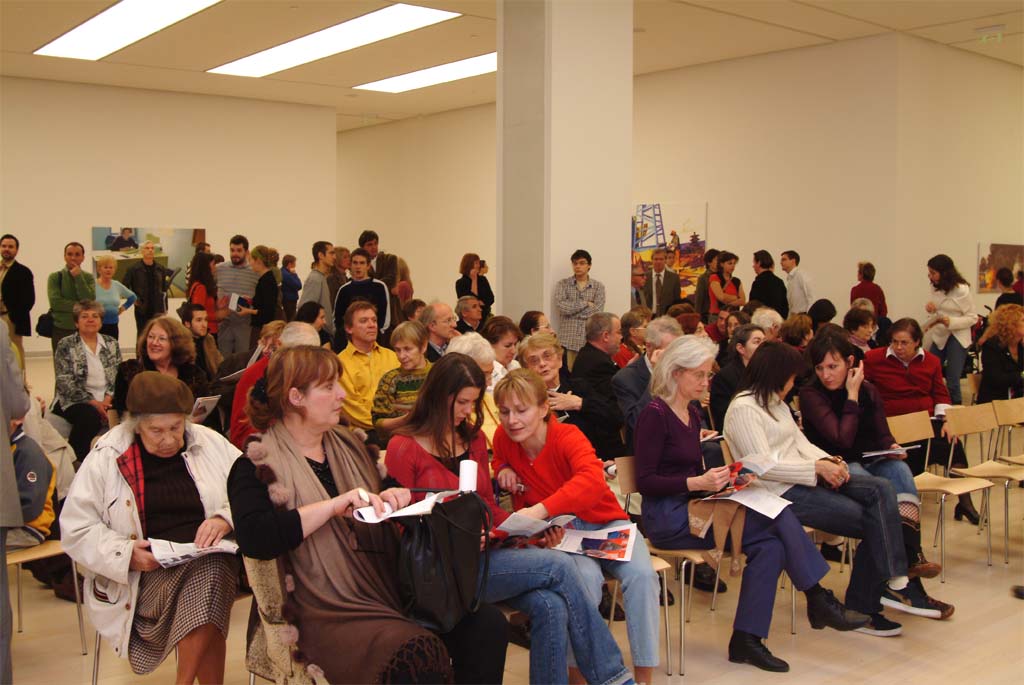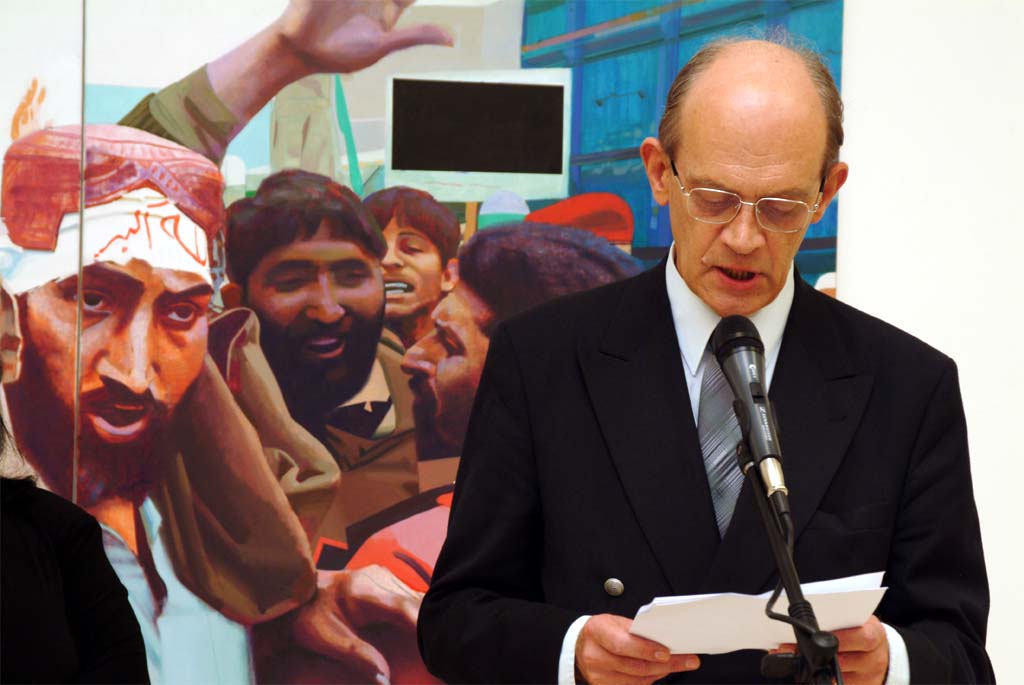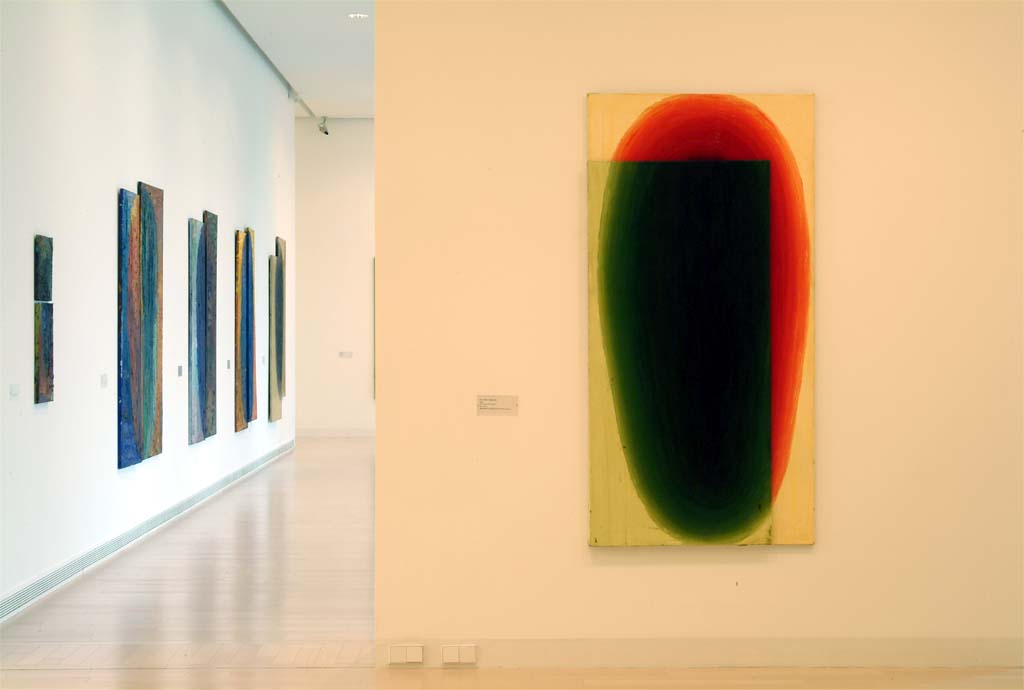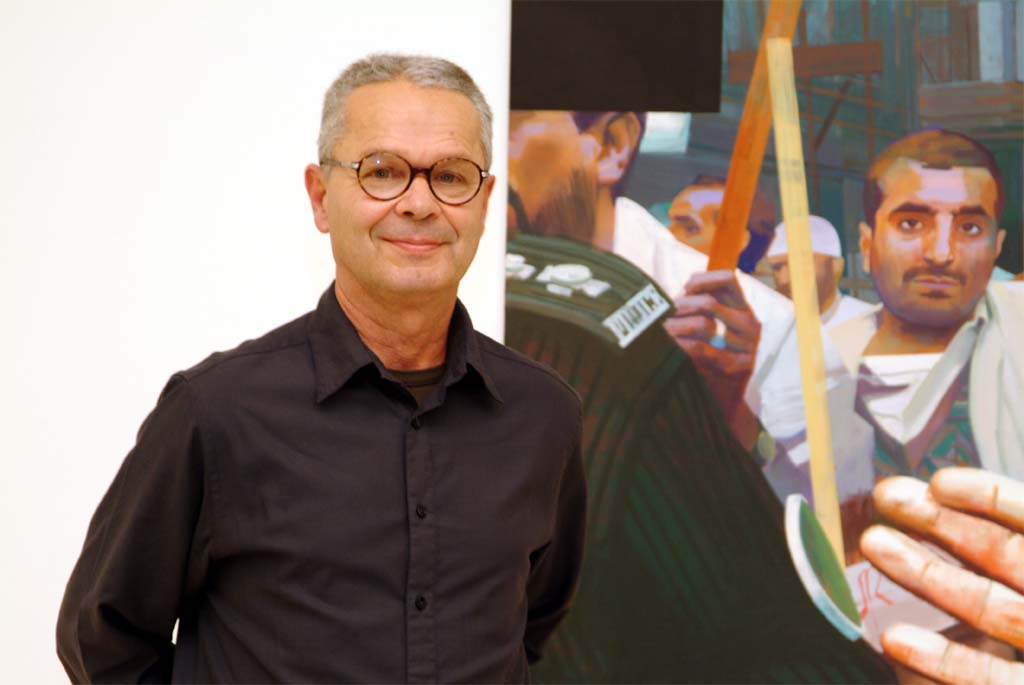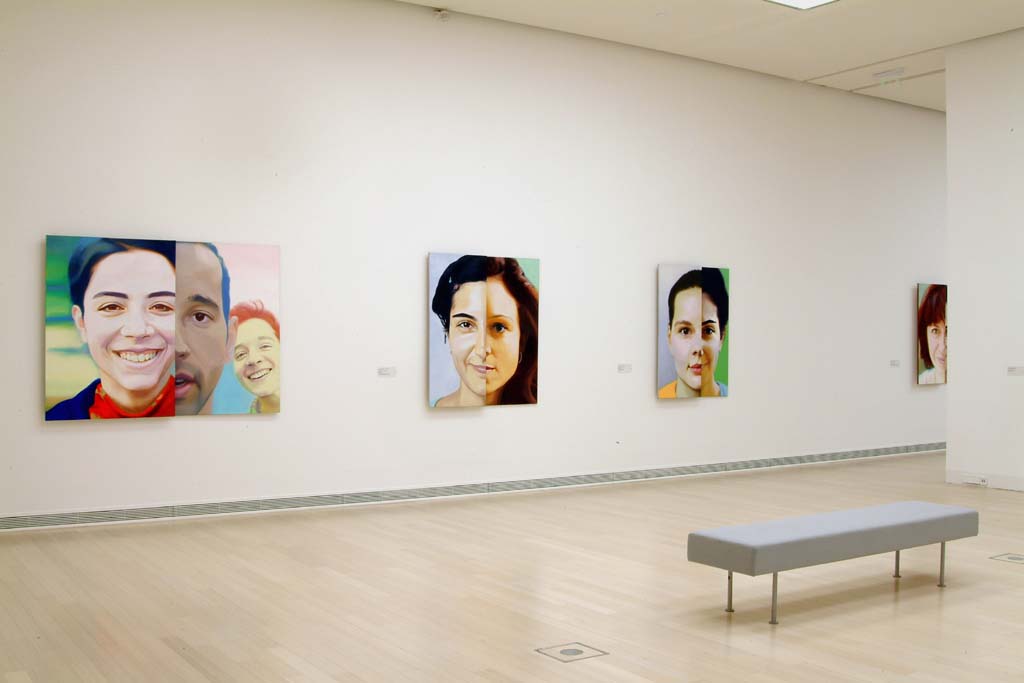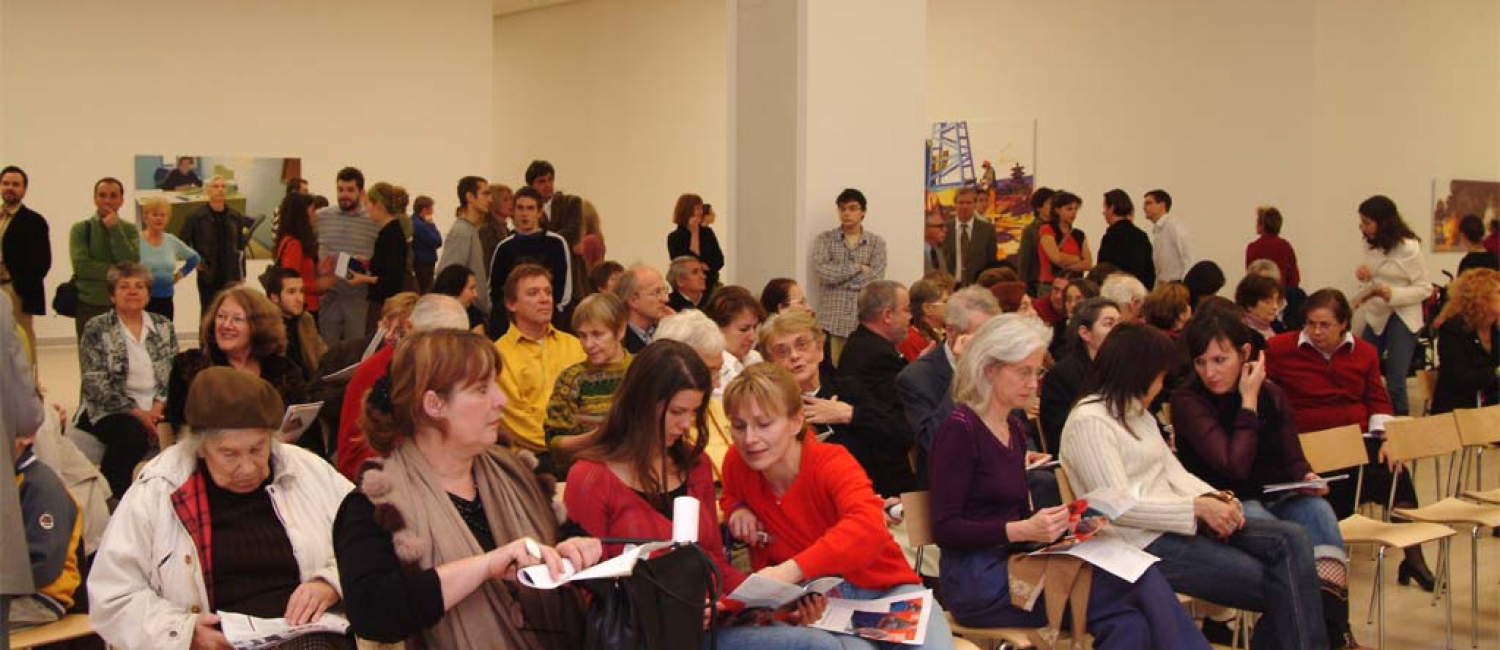Ákos Birkás, who was born in 1941, is one of the emblematic figures of contemporary Hungarian art. A few years ago, he struck out in a new direction in his oeuvre, putting his earlier work into a quite new perspective. This retrospective exhibition presents Birkás’s latest works in the light of his new pictures.
In the 1960s, Birkás was renown for his painted expressive portraits, but from the mid-seventies, he began making conceptual, hyperrealist pictures, before continuing his researches into the relationship between the work and environment / the work and observer, by photographic means. He dealt with the picture as both object and role, while producing a series of photo portraits. He began painting in the eighties and in 1985 commenced his series of Heads which also expanded into an epic series. The only motif here was an ellipse occupying a brick base. After painting countless variations on this pared down form, which can have countless other meanings besides the human face, in 2000, Birkás unexpectedly began painting large scale portraits, the photorealistic style of which, their light treatment of colour and manner of painting stood in stark contrast to his earlier abstract pictures. By the same token, the basic questions and principles of Ákos Birkás’s art have remained unchanged through the years: the composition, the structure, the problem in the broader sense of “image architecture,” as well as the universal theme of head and face.
